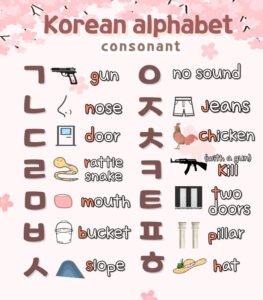아/어/여 있다 Grammar: Describing a continuing state
Hello! Today, we’re going to learn about the 아/어/여 있다 grammar !
This structure is often translated as “to be in a state of ~ing” or “to have been ~ed and remain in that state.” Since it can be easily confused with -고 있다, we’ll also go over their key differences.
I’ll guide you through how to use this expression naturally with plenty of examples. Let’s get started! 🚀
Let’s grasp the concept of grammar
‘Conjugated verb + 있다’
📌 Key meaning
Something happened and is still in that state.
-> Often used for passive or completed actions.
🌱How to form🌱
Conjugated verb + 있다.
✅ If the verb stem has ㅏ or ㅗ → use -아 있다
✅ For other vowels → use -어 있다
✨ 하다 verbs → use -여 있다 (doesn’t change to 해!)✨
Not all verbs work with this grammar!
It is mainly used with verbs that describe a resulting state after an action.
1️⃣ Verbs of Position & State
| Korean | English | Example Sentence |
|---|---|---|
| 앉다 → 앉아 있다 | To be sitting | 의자에 앉아 있어. (I am sitting on the chair.) |
| 서다 → 서 있다 | To be standing | 문 앞에 서 있어. (I am standing in front of the door.) |
| 눕다 → 누워 있다 | To be lying down | 침대에 누워 있어. (I am lying on the bed.) |
| 안기다 → 안겨 있다 | To be being held, be in one’s arms | 아기가 엄마에게 안겨 있어. (The baby is being held by the mother.) |
When describing your position, we typically use the 아/어/여 있다 form.
However, if you want to describe an action you’re doing while being in a certain position, you can use the 아/어/여서 structure to combine the two actions.
For example:
✅ 누워서 TV 봐요. → I watch TV while lying down.
✅ 안겨서 자요. → I sleep while being held.
✅ 서서 가요. → I go while standing.
This structure helps express both the position and the action happening simultaneously.
2️⃣ Verbs Indicating a Continued Result (Mainly with passive forms)
| Korean | English | Example Sentence |
|---|---|---|
| 열리다 → 열려 있다 | 열리다 : To be open | 창문이 열려 있어. (The window is open.) |
| 닫히다 → 닫혀 있다 | 닫히다: To be closed | 문이 닫혀 있어. (The door is closed.) |
| 켜지다 → 켜져 있다 | 켜지다: To be turned on | TV가 켜져 있어. (The TV is on.) |
| 꺼지다 → 꺼져 있다 | 꺼지다: To be turned off | 불이 꺼져 있어. (The light is off.) |
| 걸리다 → 걸려 있다 | 걸리다: To be hung | 벽에 그림이 걸려 있어. (A painting is hanging on the wall.) |
| 붙이다 → 붙여 있다 | 붙이다: to be attached | 거울이 벽에 붙어 있어. (The mirror is attached to the wall.) |
| 쌓이다 → 쌓여 있다 | 쌓이다: to be piled | 도로에 눈이 쌓여 있어. (Snow is piled up on the road.) |
| 꽂히다 -> 꽂혀 있다 | 꽂히다: to be placed, pinned | 책이 책꽂이에 가지런히 꽂혀 있어. (The books are neatly placed on the bookshelf.) |
| 밀리다 -> 밀려 있다 | 밀리다: be left undone | 일이 많이 밀려 있어. (There’s a lot of work piled up.) |
As you can see, 아/어/여 있다 is mainly used with passive forms.
There are two main usages of this grammar:
1️⃣ With passive verbs to indicate a continued state.
2️⃣ To describe one’s position (e.g., sitting, lying down)
This structure isn’t very commonly used outside these contexts. So, if you simply memorize the examples above, that should be enough! 😊
Many learners confuse -아/어 있다 with -고 있다, but they are different!
🛑 Difference Between -아/어 있다 and -고 있다
“-고 있다” = The action is actively happening. (process)
“-아/어 있다” = The action happened, and the result remains. (state)
| Grammar | Meaning | Example |
|---|---|---|
| -여 있다 | A state that remains after an action is completed (A continued state) | 문이 열려 있어. (The door is open.) |
| -고 있다 | An action that is happening right now (An ongoing action) | 문을 열고 있어. (I am opening the door.) |
Summary🌱
✅ -아/어 있다 expresses a continuing state after an action.
✅ Used with verbs that describe a resulting state.
✅ Not the same as -고 있다, which describes an ongoing action.








